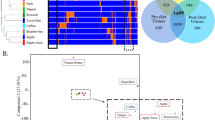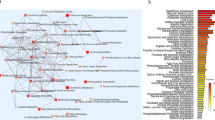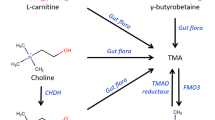Abstract
Background
Metabolomics is a powerful tool for investigating the association between nutrition and health status. Although urine is commonly employed for studying the metabolism and transformation of food components, the use of blood samples could be preferable to gain new insights into the bioavailability of diet-derived compounds and their involvement in health. However, the chemical complexity of blood samples hinders the analysis of this biological fluid considerably, which makes the development of novel and comprehensive analytical methods mandatory.
Methods
In this work, we optimized a multi-targeted metabolomics platform for the quantitative and simultaneous analysis of 450 food-derived metabolites by ultra-high performance liquid chromatography coupled to tandem mass spectrometry. To handle the chemical complexity of blood samples, three complementary extraction methods were assayed and compared in terms of recovery, sensitivity, precision and matrix effects with the aim of maximizing metabolomics coverage: protein precipitation, reversed solid-phase extraction, and hybrid protein precipitation with solid-phase extraction-mediated phospholipid removal.
Results
After careful optimization of the extraction conditions, protein precipitation enabled the most efficient and high-throughput extraction of the food metabolome in plasma, although solid-phase extraction-based protocols provided complementary performance for the analysis of specific polyphenol classes. The developed method yielded accurate recovery rates with negligible matrix effects, and good linearity, as well as high sensitivity and precision for most of the analyzed metabolites.
Conclusions
The multi-targeted metabolomics platform optimized in this work enables the simultaneous detection and quantitation of 450 dietary metabolites in short-run times using small volumes of biological sample, which facilitates its application to epidemiological studies.
This is a preview of subscription content, access via your institution
Access options
Subscribe to this journal
Receive 12 print issues and online access
$259.00 per year
only $21.58 per issue
Buy this article
- Purchase on Springer Link
- Instant access to full article PDF
Prices may be subject to local taxes which are calculated during checkout

Similar content being viewed by others
References
Ulaszewska MM, Weinert CH, Trimigno A, Portmann R, Andres Lacueva C, Badertscher R, et al. Nutrimetabolomics: an integrative action for metabolomic analyses in human nutritional studies. Mol Nutr Food Res. 2019;63:e1800384.
Garcia-Aloy M, Andres-Lacueva C. Food intake biomarkers for increasing the efficiency of dietary pattern assessment through the use of metabolomics: unforeseen research requirements for addressing current gaps. J Agric Food Chem. 2018;66:5–7.
Heianza Y, Qi L. Gene-diet interaction and precision nutrition in obesity. Int J Mol Sci. 2017;18:787.
Drabsch T, Holzapfel C. A scientific perspective of personalised gene-based dietary recommendations for weight management. Nutrients. 2019;11:617.
González-Peña D, Brennan L. Recent advances in the application of metabolomics for nutrition and health. Annu Rev Food Sci Technol. 2019;10:479–519.
Brennan L, Hu FB. Metabolomics-based dietary biomarkers in nutritional epidemiology-Current status and future opportunities. Mol Nutr Food Res. 2019;63:e1701064.
Dragsted LO, Gao Q, Scalbert A, Vergères G, Kolehmainen M, Manach C, et al. Validation of biomarkers of food intake - critical assessment of candidate biomarkers. Genes Nutr. 2018;13:14.
Scalbert A, Brennan L, Manach C, Andres-Lacueva C, Dragsted LO, Draper J, et al. The food metabolome: a window over dietary exposure. Am J Clin Nutr. 2014;99:1286–308.
Gibney MJ, Walsh M, Brennan L, Roche HM, German B, van Ommen B. Metabolomics in human nutrition: opportunities and challenges. Am J Clin Nutr. 2005;82:497–503.
Crews H, Alink G, Andersen R, Braesco V, Holst B, Maiani G, et al. A critical assessment of some biomarker approaches linked with dietary intake. Br J Nutr. 2001;86:S5–35.
Shafaei A, Croft K, Hodgson J, Boyce MC. Simultaneous quantitative analysis of polyphenolic compounds in human plasma by liquid chromatography tandem mass spectrometry. J Sep Sci. 2019;42:2909–21.
Achaintre D, Gicquiau A, Li L, Rinaldi S, Scalbert A. Quantification of 38 dietary polyphenols in plasma by differential isotope labelling and liquid chromatography electrospray ionization tandem mass spectrometry. J Chromatogr A. 2018;1558:50–58.
de Oliveira DM, Pinto CB, Sampaio GR, Yonekura L, Catharino RR, Bastos DH. Development and validation of methods for the extraction of phenolic acids from plasma, urine, and liver and analysis by UPLC-MS. J Agric Food Chem. 2013;61:6113–21.
Pereira-Caro G, Ordóñez JL, Ludwig I, Gaillet S, Mena P, Del Rio D, et al. Development and validation of an UHPLC-HRMS protocol for the analysis of flavan-3-ol metabolites and catabolites in urine, plasma and feces of rats fed a red wine proanthocyanidin extract. Food Chem. 2018;252:49–60.
Svilar L, Martin JC, Defoort C, Paut C, Tourniaire F, Brochot A. Quantification of trans-resveratrol and its metabolites in human plasma using ultra-high performance liquid chromatography tandem quadrupole-orbitrap mass spectrometry. J Chromatogr B Analyt Technol Biomed Life Sci. 2019;1104:119–29.
Orozco-Solano MI, Ferreiro-Vera C, Priego-Capote F, Luque, de Castro MD. Automated method for determination of olive oil phenols and metabolites in human plasma and application in intervention studies. J Chromatogr A. 2012;1258:108–16.
Palmnäs M, Brunius C, Shi L, Rostgaard-Hansen A, Torres NE, González-Domínguez R, et al. Perspective: Metabotyping-A potential personalized nutrition strategy for precision prevention of cardiometabolic disease. Adv Nutr. 2020;11:524–532.
González-Domínguez R, Urpi-Sarda M, Jáuregui O, Needs PW, Kroon PA, Andrés-Lacueva C. Quantitative Dietary Fingerprinting (QDF)-A Novel Tool for Comprehensive Dietary Assessment Based on Urinary Nutrimetabolomics. J Agric Food Chem. 2020;68:1851–61.
Rotches-Ribalta M, Urpi-Sarda M, Llorach R, Boto-Ordoñez M, Jauregui O, Chiva-Blanch G, et al. Gut and microbial resveratrol metabolite profiling after moderate long-term consumption of red wine versus dealcoholized red wine in humans by an optimized ultra-high-pressure liquid chromatography tandem mass spectrometry method. J Chromatogr A. 2012;1265:105–13.
Tulipani S, Llorach R, Urpi-Sarda M, Andres-Lacueva C. Comparative analysis of sample preparation methods to handle the complexity of the blood fluid metabolome: when less is more. Anal Chem. 2013;85:341–8.
Food and Drug Administration (FDA), US Department of Health and Human Services. Bioanalytical Method Validation. Guidance for Industry. 2018. https://www.fda.gov/files/drugs/published/Bioanalytical-Method-Validation-Guidance-for-Industry.pdf (accessed June 2020).
Carmical J, Brown S. The impact of phospholipids and phospholipid removal on bioanalytical method performance. Biomed Chromatogr. 2016;30:710–20.
Khymenets O, Rabassa M, Rodríguez-Palmero M, Rivero-Urgell M, Urpi-Sarda M, Tulipani S, et al. Dietary epicatechin is available to breastfed infants through human breast milk in the form of host and microbial metabolites. J Agric Food Chem. 2016;64:5354–60.
Ajila CM, Brar SK, Verma M, Tyagi RD, Godbout S, Valéro JR. Extraction and analysis of polyphenols: recent trends. Crit Rev Biotechnol. 2011;31:227–49.
Muñoz-González I, Sánchez-Patán F, Jiménez-Girón A, Cueva C, Monagas M, Martín-Álvarez PJ, et al. Evaluation of SPE as preparative technique for the analysis of phenolic metabolites in human feces. Food Anal Methods. 2014;7:844–53.
Fernandes I, Faria A, de Freitas V, Calhau C, Mateus N. Multiple-approach studies to assess anthocyanin bioavailability. Phytochem Rev. 2015;14:899–919.
Castellano-Escuder P, González-Domínguez R, Wishart DS, Andrés-Lacueva C, Sánchez-Pla A FOBI: An ontology to represent food intake data and associate it with metabolomic data. Database. 2020 (in press) https://doi.org/10.1093/database/baaa033.
Feliciano RP, Mecha E, Bronze MR, Rodriguez-Mateos A. Development and validation of a high-throughput micro solid-phase extraction method coupled with ultra-high-performance liquid chromatography-quadrupole time-of-flight mass spectrometry for rapid identification and quantification of phenolic metabolites in human plasma and urine. J Chromatogr A. 2016;1464:21–31.
Gasperotti M, Masuero D, Guella G, Mattivi F, Vrhovsek U. Development of a targeted method for twenty-three metabolites related to polyphenol gut microbial metabolism in biological samples, using SPE and UHPLC-ESI-MS/MS. Talanta. 2014;128:221–30.
Marmet C, Actis-Goretta L, Renouf M, Giuffrida F. Quantification of phenolic acids and their methylates, glucuronides, sulfates and lactones metabolites in human plasma by LC-MS/MS after oral ingestion of soluble coffee. J Pharm Biomed Anal. 2014;88:617–25.
Maruvada P, Lampe JW, Wishart DS, Barupal D, Chester DN, Dodd D, et al. Perspective: Dietary biomarkers of intake and exposure-exploration with omics approaches. Adv Nutr. 2020;11:200–15.
Acknowledgements
This work has received funding from the Spanish Ministry of Economy and Competitiveness (MINECO, PCIN-2015-229, PCIN-2015-238, PCIN-2017-076) under the umbrella of the European Joint Programming Initiative “A Healthy Diet for a Healthy Life” (JPI HDHL, http://www.healthydietforhealthylife.eu), the CIBERFES and CIBEROBN (co-funded by the FEDER Program from EU), and from the Generalitat de Catalunya’s Agency AGAUR (2017SGR1546). RGD thanks “Juan de la Cierva” program MINECO (FJCI-2015-26590) and CAL the ICREA Academia award 2018. Authors thank to Paul Needs and Paul Kroon (Quadram Institute Bioscience) for kindly providing in-house synthesized standards.
Author information
Authors and Affiliations
Corresponding author
Ethics declarations
Conflict of interest
The authors declare that they have no conflict of interest.
Additional information
Publisher’s note Springer Nature remains neutral with regard to jurisdictional claims in published maps and institutional affiliations.
Supplementary information
41366_2020_628_MOESM1_ESM.docx
Quantifying the human diet in the crosstalk between nutrition and health by multi-targeted metabolomics of food and microbiota-derived metabolites - Supplemental Material
Rights and permissions
About this article
Cite this article
González-Domínguez, R., Jáuregui, O., Mena, P. et al. Quantifying the human diet in the crosstalk between nutrition and health by multi-targeted metabolomics of food and microbiota-derived metabolites. Int J Obes 44, 2372–2381 (2020). https://doi.org/10.1038/s41366-020-0628-1
Received:
Revised:
Accepted:
Published:
Issue Date:
DOI: https://doi.org/10.1038/s41366-020-0628-1
This article is cited by
-
Biomarkers of moderate alcohol intake and alcoholic beverages: a systematic literature review
Genes & Nutrition (2023)
-
Triangulating nutrigenomics, metabolomics and microbiomics toward personalized nutrition and healthy living
Human Genomics (2023)
-
Can we measure food intake in humans?
International Journal of Obesity (2023)
-
Plasma metabolite profiles related to plant-based diets and the risk of type 2 diabetes
Diabetologia (2022)



